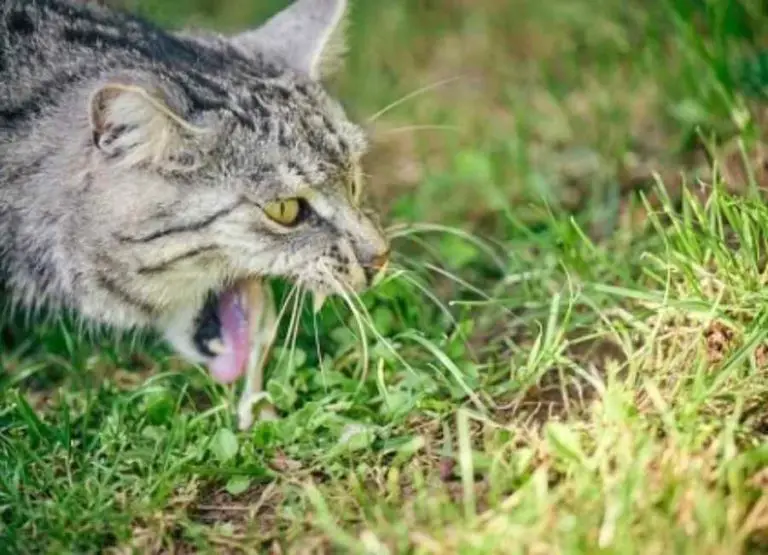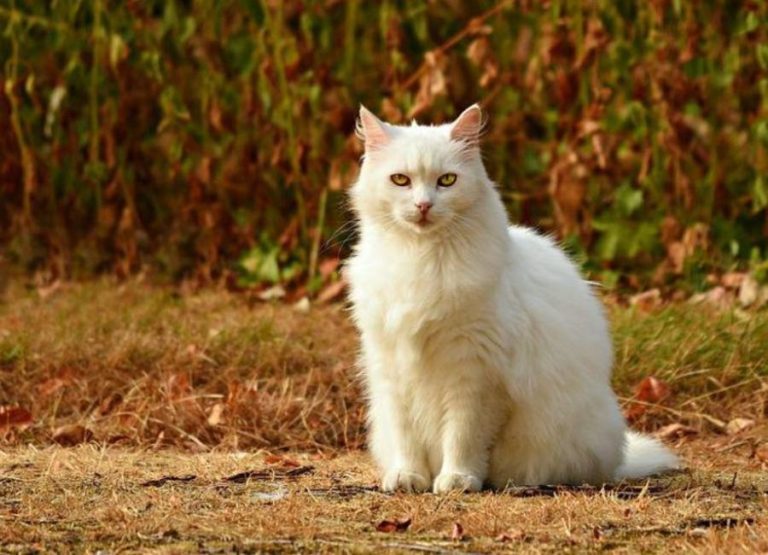Transition Outdoor Cat to Indoor [12 Steps]
![Transition Outdoor Cat to Indoor [12 Steps] Transition Outdoor Cat to Indoor](https://petcreeks.com/wp-content/uploads/2023/10/pexels-jenna-hamra-776677.jpg)
Transition outdoor cat to indoor? Let’s break it down further together…
Are you thinking of transitioning your outdoor cat to an indoor lifestyle? Well, you’ve come to the right place!
In this blog post, we’ll explore some simple yet effective strategies to make the transition smooth and stress-free for you and your furry friend.
So, let’s dive in and create a safe and happy haven for your adventurous outdoor cat right inside your cozy home!
Benefits of Transitioning an Outdoor Cat to Indoors
Transitioning your outdoor cat to an indoor cat can actually bring about some great benefits.
First off, it significantly reduces the risk of your cat getting into fights with other animals or encountering dangerous situations outdoors.
It also helps protect wildlife, as indoor cats won’t be hunting birds or other small animals. Indoor cats are generally healthier, as they’re less likely to pick up parasites or diseases from outdoor exposure.
Plus, you’ll have peace of mind knowing your feline friend is safe from traffic accidents and other outdoor hazards.
Lastly, indoor cats tend to live longer, healthier lives, so making the transition can really be a win-win for both you and your cat!
Learn more about the dangers of outdoor cats.
Transition Outdoor Cat to Indoors
Transitioning an outdoor cat to an indoor lifestyle can be a big change for your furry friend.
Start by creating a comfortable indoor environment with plenty of toys, scratching posts, and cozy spots for them to relax.
Gradually limit outdoor access while providing lots of indoor stimulation to help your cat adjust to their new indoor life.
Remember, patience and positive reinforcement are key during this transition!
Let’s break it down further…
Here is the step-by-step process of transitioning an outdoor cat to an indoor cat:
Step 1: Start Slow
When you begin the transition, start by bringing your cat indoors for short periods. Allow them to explore a designated room or area at their own pace. This gradual introduction will help them acclimate to the indoor environment without feeling overwhelmed.
Step 2: Secure Your Home
Before fully transitioning your cat indoors, thoroughly inspect your home for any potential escape routes or hazards. Check that windows are secure, and remove any toxic plants or substances that could harm your cat. Ensuring a safe indoor environment is crucial for their well-being.
Step 3: Introduce a Litter Box
A clean litter box is essential for indoor cats. Place the litter box in a quiet and easily accessible area of your home. Show your cat where the litter box is located, and gently place them inside to help them become familiar with it. Use a litter substrate that your cat is comfortable with, and ensure it is regularly cleaned to maintain good hygiene.
Step 4: Gradually Limit Outdoor Access
Start by gradually reducing your cat’s outdoor time. Establish a consistent routine that decreases the amount of time your cat spends outside over a period of several weeks. For example, if your cat spends several hours outdoors each day, gradually reduce it to just a couple of hours, then to supervised outdoor sessions, until they are fully transitioned to an indoor lifestyle.
5: Maintain a Consistent Routine
Establish a regular feeding schedule and playtime routine for your indoor cat. Consistency is key to helping them adjust to their new environment. Cats thrive on routine, so maintaining a predictable schedule can provide them with a sense of security and stability.
Step 6: Increase Indoor Stimulation.
To compensate for the reduced outdoor exploration, engage in regular playtime with your cat. Use interactive toys, such as feather wands or laser pointers, to provide mental and physical stimulation. Rotate the toys regularly to keep them interesting. Consider setting aside dedicated play sessions every day to ensure your cat gets the exercise and interaction they need.
Step 7: Install Window Perches
Cats are naturally curious about the outside world. Place comfortable perches near windows, allowing your cat to observe birds, squirrels, and other outdoor activities. This visual stimulation can help satisfy their instinctual needs and provide entertainment. Ensure that the perches are securely attached and provide a safe and comfortable vantage point for your cat.
Learn more about keeping outdoor cats warm in winter.
Step 8: Consider a Catio
If feasible, consider creating an enclosed outdoor space, such as a catio, to provide your cat with a safe outdoor experience. A catio allows cats to enjoy fresh air and sunlight while remaining protected from potential outdoor dangers.
Step 9: Harness and Leash Training
Harness and leash training can be a great way to provide supervised outdoor time for your cat while keeping them safe. Start the training process indoors by introducing your cat to the harness gradually. Allow them to get used to wearing it before attaching the leash. Once your cat is comfortable wearing the harness indoors, gradually transition to outdoor training in a secure and controlled area, such as a fenced yard or garden.
Step 10: Provide Environmental Enrichment
In addition to playtime, offer a variety of environmental enrichment options for your indoor cat. Puzzle feeders can make mealtime more engaging by requiring your cat to work for their food. Consider rotating toys regularly to prevent boredom. Scratching posts and cat trees provide opportunities for climbing and stretching, mimicking the physical activities cats would engage in outdoors.
Step 11: Monitor and Reassess
Throughout the transition process, closely monitor your cat’s behavior and well-being. Watch for signs of stress, anxiety, or frustration. If any issues arise, consult with a veterinarian or a professional animal behaviorist for guidance. They can provide personalized advice and strategies to address any challenges you may encounter during the transition.
Step 12: Be Patient
Transitioning an outdoor cat to an indoor lifestyle takes time and patience. Every cat has a unique personality and may adjust at their own pace. Be patient and understanding as your cat adapts to their new environment, and provide them with plenty of love, support, and reassurance along the way.
Remember, every cat is unique, and the timeline for transitioning an outdoor cat to an indoor cat may vary. Be patient, provide positive reinforcement, and adapt the process to suit your cat’s individual needs.
Find out if outdoor cats are happier.
Frequently Asked Questions
Why should I transition my outdoor cat to indoor living?
Transitioning your outdoor cat to indoor living can provide numerous benefits, such as protecting them from potential dangers like traffic accidents, predators, and diseases. Indoor cats generally live longer, healthier lives and are less likely to get lost or injured.
How do I start transitioning my outdoor cat to indoor living?
Begin by gradually introducing your cat to the indoors. Create a safe and stimulating indoor environment with toys, scratching posts, and comfortable hiding spots. Start by keeping your cat inside for short periods, and slowly increase the duration over time.
How can I ensure my indoor cat stays entertained and mentally stimulated?
Indoor cats need mental and physical stimulation to prevent boredom. Provide interactive toys, cat trees, and puzzle feeders to keep them engaged. Set up perches near windows so they can watch birds or wildlife outside. Regular playtime and social interaction are also essential.
What if my cat resists the transition and wants to go outside?
It’s normal for cats to resist the transition initially, mainly if they are accustomed to outdoor freedom. Be patient and provide plenty of attention and playtime indoors. Consider using a harness and leash to safely allow supervised outdoor time in a secure area, like a catio or enclosed garden.
How can I ensure my indoor cat gets enough exercise?
Indoor cats require regular exercise to maintain a healthy weight and prevent boredom. Engage them in interactive play sessions using toys like laser pointers, feather wands, or catnip-filled toys. Encourage climbing and jumping with cat trees or shelves. Consider adopting a second cat for companionship and play.
Are there any health considerations I should be aware of when transitioning my cat to indoor living?
Indoor cats may have different health needs compared to outdoor cats. Ensure they have a balanced diet, maintain a healthy weight, and provide regular veterinary care. Monitor their litter box habits and provide a clean litter box. Indoor cats may also benefit from dental care and regular grooming.
Learn more about factors affecting outdoor cat’s lifespan.
Conclusion
In conclusion, making the transition from an outdoor cat to an indoor lifestyle is a decision that requires careful consideration.
By providing a stimulating indoor environment, plenty of playtime, and lots of love and attention, you can help your furry friend adjust to their new surroundings.
Remember, a happy and healthy indoor cat is a content and fulfilled companion for years to come.




![How Long Do Cats Usually Live [11 Factors to Consider] How Long Do Cats Usually Live](https://petcreeks.com/wp-content/uploads/2023/10/pexels-alina-bystrova-11570743.jpg)

